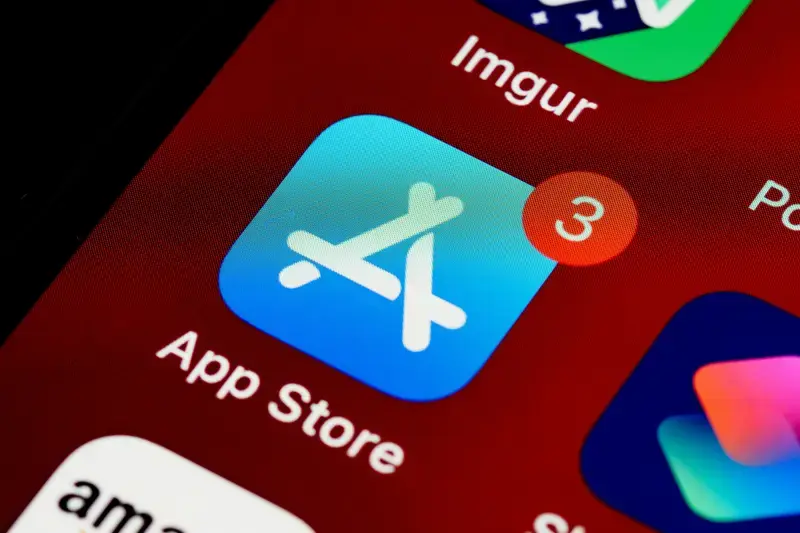How Do I Choose The Right Category For My App In The App Store?
Nine out of ten mobile apps fail within their first year—and choosing the wrong category is one of the biggest culprits. I've watched brilliant apps disappear into the void simply because they picked a category that buried them amongst thousands of competitors, whilst mediocre apps in the right category soared to the top charts. The app store category you choose isn't just a label; it's the foundation of your entire ASO strategy and determines whether your target audience will ever find your app.
When you submit your mobile app to the App Store or Google Play, you're not just uploading code—you're entering a complex ecosystem where visibility is everything. Your category choice affects your ranking algorithms, your competitor pool, and most importantly, your discoverability. Get it wrong and you'll be fighting an uphill battle from day one.
The right category can make an average app successful, but the wrong category can make a great app invisible
This guide will walk you through everything you need to know about choosing the perfect category for your app. We'll explore how categories impact your app store optimisation efforts, the difference between primary and secondary categories, and the common mistakes that cost developers thousands of downloads. By the end, you'll have a clear strategy for positioning your app where it belongs—and where it can thrive.
Understanding App Store Categories
When I first started building apps—way back when the App Store was still finding its feet—categories seemed pretty straightforward. You had Games, Utilities, Business, and a handful of others. Simple, right? Well, not quite anymore! Today's app stores have dozens of categories, and picking the wrong one can seriously hurt your app's chances of being discovered.
Think of app store categories as the filing system for millions of apps. Apple's App Store has over 20 main categories, whilst Google Play has around 30. Each category serves as a filter that helps users find what they're looking for—whether that's a productivity tool, a fitness tracker, or the latest puzzle game.
Primary Categories You Should Know
The most popular categories include Games (which dominates downloads), Business, Education, Entertainment, Health & Fitness, Lifestyle, Shopping, Social Networking, Travel, and Utilities. But here's where it gets interesting—some categories are much more competitive than others.
- Games: Highest competition but massive audience
- Business: Moderate competition, professional users
- Education: Growing market, loyal users
- Health & Fitness: Highly engaged audience
- Utilities: Lower competition for specific tools
The category you choose doesn't just affect where your app appears in browsing—it influences everything from your competition pool to user expectations. Getting this decision right from the start can make the difference between your app thriving or getting lost in the crowd.
How Categories Affect Your App's Visibility
Your app category choice directly impacts how many people will discover your mobile app in the app stores. When users browse the App Store or Google Play, they often start by looking within specific categories—and if your app isn't in the right one, you're missing out on potential downloads.
The app stores use categories as a fundamental way to organise millions of apps. This means your category placement affects your app's ranking within category-specific search results and determines which users see your app when they're browsing. If you're competing in a category with fewer apps, you'll have better visibility than if you're lost amongst thousands of competitors.
Category Rankings Matter More Than You Think
Each category has its own top charts and featured sections. Being ranked #50 in a niche category like "Medical" often brings more downloads than being #500 in "Games" because users browsing medical apps are more likely to scroll down and discover your app. The competition level varies dramatically between categories, which directly impacts your app store optimisation efforts.
Check your category's competition level by counting how many apps appear in the top charts—categories with fewer active competitors give you better visibility opportunities.
Search Behaviour Varies by Category
Users searching within different categories have different expectations and behaviours. Someone browsing "Productivity" apps expects different features than someone in "Entertainment". Understanding these patterns helps you optimise your app store optimisation strategy and choose keywords that match user intent within your chosen category.
| Category Type | User Behaviour | Visibility Impact |
|---|---|---|
| Popular Categories | Quick browsing, high competition | Harder to get noticed |
| Niche Categories | Detailed searching, fewer apps | Better ranking opportunities |
| Utility Categories | Solution-focused searches | Intent-driven downloads |
Primary vs Secondary Categories—What's the Difference
When you submit your app to the App Store, you'll notice there are two different types of categories you can choose from: primary and secondary. The primary category is the main one—it's where your app will primarily live and compete for visibility. Think of it as your app's home address in the App Store.
Your secondary category is optional, but it gives you a second chance to be discovered. If someone browses that secondary category, your app might show up there too. However, and this is important, your secondary category won't carry as much weight in search rankings or category rankings as your primary choice.
Why This Matters for Your App's Success
The primary category affects everything from your competition level to how Apple's algorithm treats your app. If you choose "Games" as your primary category, you're competing against millions of other games. But if you pick "Education" as primary and "Games" as secondary, you're mainly competing in the much smaller education space whilst still appearing in game searches occasionally.
Most developers make the mistake of choosing the most obvious category as their primary. Sometimes the less obvious choice actually gives you better visibility and more downloads.
How to Choose Between Them
Here's what I recommend checking before making your choice:
- Competition levels in each category
- How well similar apps perform in different categories
- Whether your app genuinely fits the category's purpose
- Download volumes and user behaviour in each category
- App Store editorial feature opportunities
Common Category Mistakes That Cost Downloads
After working on mobile app projects for over eight years, I've seen some proper category disasters that could have been easily avoided. The most common mistake I see is developers choosing categories based on what they think sounds impressive rather than what actually describes their app. You might think putting your fitness tracker in the "Health & Fitness" category is obvious, but if it's primarily a social platform where people share workouts, "Social Networking" might actually perform better.
The Vanity Category Trap
Many developers fall into what I call the vanity category trap—picking categories that make their app sound more important or sophisticated than it really is. A simple photo editing app doesn't belong in "Graphics & Design" just because it sounds more professional; it belongs in "Photo & Video" where users actually look for it. This kind of mismatch between user expectations and app placement absolutely kills your ASO performance.
The biggest category mistake isn't picking the wrong one—it's picking one that doesn't match how your target users actually search and browse
Ignoring Your Actual Users
Another costly error is choosing categories based on features rather than user behaviour. Your app might technically be a productivity tool, but if your users primarily use it for entertainment, you're missing out on downloads by not considering the "Entertainment" category. Remember, app store optimisation isn't about where your app fits logically—it's about where your users expect to find it.
Researching Your Competition's Category Choices
One of the smartest things you can do when choosing your app category is to look at what your competitors are doing. I'm not talking about copying them blindly—that's a recipe for disaster. I'm talking about understanding their strategy and learning from their choices.
Start by identifying your direct competitors; the apps that solve similar problems or target the same audience. Download them, use them, and most importantly, note which categories they've chosen. You might be surprised to find that successful apps in your space aren't all sitting in the same category.
What to Look For
When analysing your competition's category choices, pay attention to these key factors:
- Which primary category they've selected and why it makes sense for their app
- Their secondary category choice and how it complements their primary
- Their ranking position within those categories
- The download numbers and user ratings they're achieving
- Whether they've changed categories recently
Finding the Gaps
Sometimes the best opportunities come from spotting what your competitors aren't doing. If you notice that all your competitors are crowded into one category, there might be an opportunity to choose a less competitive category where you can rank higher. The key is finding the sweet spot between relevance and competition level.
When to Change Your App's Category
Right, let's talk about when you should actually change your app's category—because yes, you absolutely can do this and sometimes you really should. I've worked with clients who've been stuck in the wrong category for months, wondering why their downloads have flatlined when a simple category switch could've sorted everything out.
The most obvious time to make a change is when your app isn't performing well in its current category. If you're buried on page 50 of the rankings and your competitors are doing better in a different category, that's a pretty clear sign. But here's the thing—you need to be strategic about it. Don't just jump ship because you had one bad week.
Performance Indicators That Signal Change
Look at your download numbers over at least a month. Are they consistently low? Check your category rankings too—if you're not cracking the top 200 in your category but similar apps are ranking well elsewhere, that's worth investigating. User reviews can be telling as well; if people keep saying your app isn't what they expected to find in that category, listen to them.
Before switching categories, research your new target category thoroughly. Check the competition level and whether your app genuinely fits the user expectations for that category.
App Store Optimisation isn't just about keywords—category choice plays a massive role in your mobile app's success. Sometimes changing category can give you that boost you've been looking for.
Testing and Measuring Category Performance
Right, so you've picked your category and launched your app—now comes the fun part of figuring out if you made the right choice. Testing category performance isn't rocket science, but it does require patience and a bit of detective work.
Key Metrics to Track
Start by monitoring your app's ranking within your chosen category. Most developers check this daily (I know I do!) because rankings can shift pretty quickly. You'll also want to keep an eye on your download numbers, conversion rates from impressions to downloads, and user reviews mentioning discoverability.
App Store Connect provides decent analytics, but third-party tools like Sensor Tower or App Annie give you more detailed insights into category performance. These platforms show you exactly where you stand against competitors and how category changes affect your visibility.
When Numbers Tell a Story
If your downloads dropped after a category change, that's a red flag. Similarly, if you're consistently ranking outside the top 200 in your category but performing well in search, you might be in the wrong place. I've seen apps jump from obscurity to the top 50 simply by switching categories—it's more common than you'd think.
Give any category change at least 2-4 weeks before making judgements. The App Store algorithms need time to adjust, and your app needs time to find its new audience. For mobile games specifically, you'll want to consider additional publication guidelines that might affect your category performance.
Conclusion
Choosing the right category for your mobile app isn't just about ticking a box during submission—it's a strategic decision that can make or break your app's success. Throughout this guide, we've explored how categories directly impact your app's visibility, discoverability, and download potential. Getting this choice wrong can bury your app in the depths of the App Store, whilst getting it right can propel it towards the success it deserves.
The beauty of app store optimisation lies in its flexibility; you're not locked into your initial category choice forever. Markets change, apps evolve, and sometimes a category shift is exactly what your app needs to find its audience. I've seen apps transform their download numbers simply by moving to a more appropriate category where they could compete more effectively.
Remember that ASO is an ongoing process, not a one-time task. Your category choice should be regularly reviewed alongside your other optimisation efforts. Keep monitoring your competitors, testing different approaches, and measuring your performance. The App Store algorithms are constantly evolving, and what works today might need adjustment tomorrow. Stay curious, stay flexible, and most importantly, stay focused on providing genuine value to your users—that's what sustainable app success really looks like.
Share this
Subscribe To Our Learning Centre
You May Also Like
These Related Guides

What Is the Apple App Store Approval Process?

How Do I Pick the Right App Store Category for My App?



